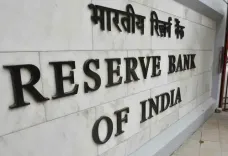How has IBC resolved over Rs 26 lakh crore debt in India in 9 years?

Synopsis
Key Takeaways
- IBC has resolved debts over Rs 26 lakh crore.
- Average recovery rate under IBC is 30-35%.
- Creditor-in-control approach enhances recovery.
- 60% of approvals in recent years were for smaller cases.
- IBC is becoming the preferred route for lenders.
Mumbai, July 22 (NationPress) Nearly a decade after the establishment of the Insolvency and Bankruptcy Code (IBC), India has successfully addressed debts exceeding Rs 26 lakh crore, as revealed in a recent report.
Of this total, approximately Rs 12 lakh crore was resolved through around 1,200 cases of distressed borrowers once they were brought before the National Company Law Tribunal (NCLT), according to data from Crisil Ratings.
Interestingly, a significant effect of the IBC has been the anxiety it instills in defaulting borrowers, leading to the settlement of nearly 30,000 cases involving Rs 14 lakh crore of debt even before these cases were formally accepted by the NCLT.
Since its inception in 2016, the IBC has transformed the previous debtor-friendly framework into a creditor-centric approach.
This pivotal change has rendered the IBC more effective compared to previous debt recovery methods such as the Debt Recovery Tribunal (DRT), Lok Adalats, and SARFAESI.
Data indicates that the average recovery rate under the IBC stands at 30-35 percent, significantly higher than 22 percent under SARFAESI, 7 percent under DRT, and merely 3 percent through Lok Adalats.
Experts assert that the flexibility afforded to creditors within the IBC—such as the authority to replace management and restructure loans—has facilitated resolutions of even smaller and mid-sized distressed assets in recent times.
In fact, around 60 percent of all IBC resolution approvals in the past three years pertained to smaller cases, which constituted only 40 percent of the total debt.
As noted by Mohit Makhija, Senior Director at Crisil Ratings, nearly one-fourth of the total resolved debt since 2016 has been managed under the IBC.
He emphasized that the IBC not only yields the highest recovery rates but has also played a role in realizing almost half of the overall recoveries.
With an increasing interest from investors in infrastructure and manufacturing assets, Makhija anticipates that the IBC will remain the go-to route for lenders.









